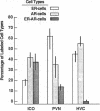Abstract
Estrogens and androgens each have unique effects but act together for the neural differentiation and control of sexual behaviors in male vertebrates, such as the canary. The neuronal basis for these synergistic effects is elusive because the spatial relation between estrogen target cells and androgen target cells is unknown. This study localized estrogen receptor (ER)-containing cells by using immunocytochemistry and androgen receptor (AR)-containing cells by using autoradiography in the same sections of the male canary brain. Three cell types, those containing only ER, those containing only AR, and those containing both ER and AR, were found in tissue-specific frequencies. The midbrain nucleus intercollicularis exhibited the highest number of cells expressing both ER and AR, whereas ER and AR are expressed only in disjunctive cell populations in the forebrain nucleus hyperstriatalis ventrale, pars caudale. Synergistic effects of androgens and estrogens for the neural behavorial control could result from cells containing both ER and AR (intracellular) and from neural circuits containing ER and AR in different cells (intercellular).
Full text
PDF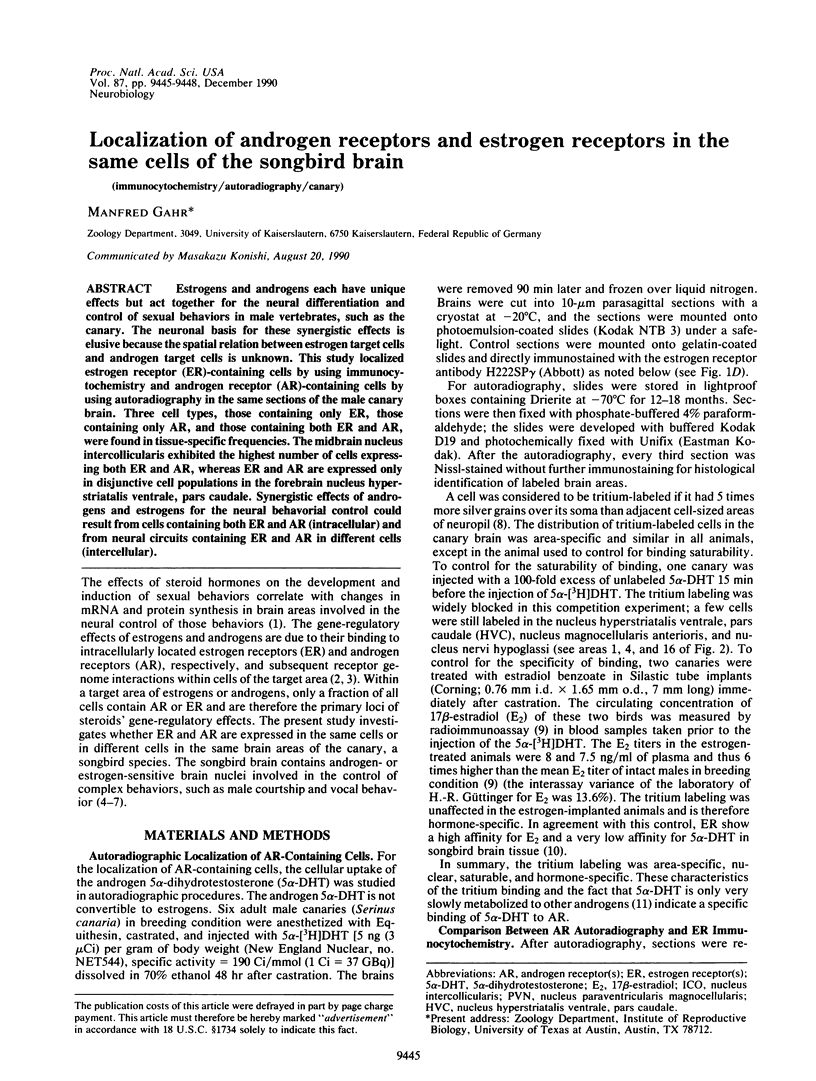
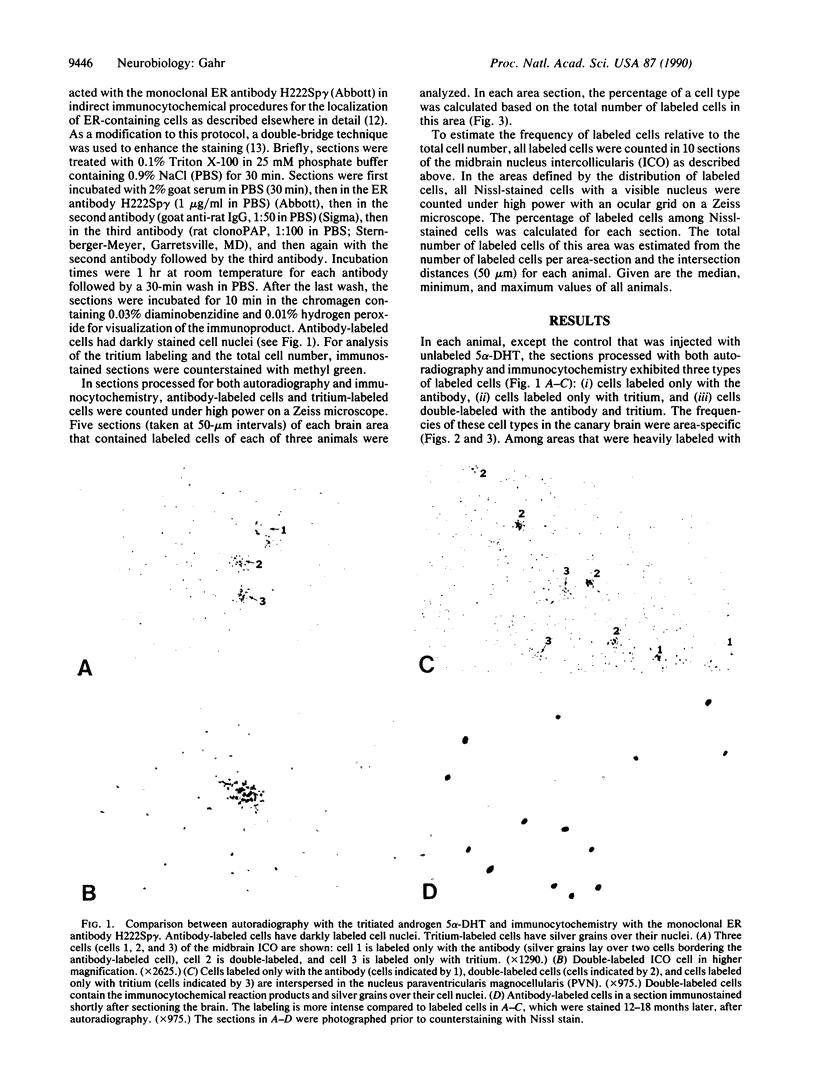
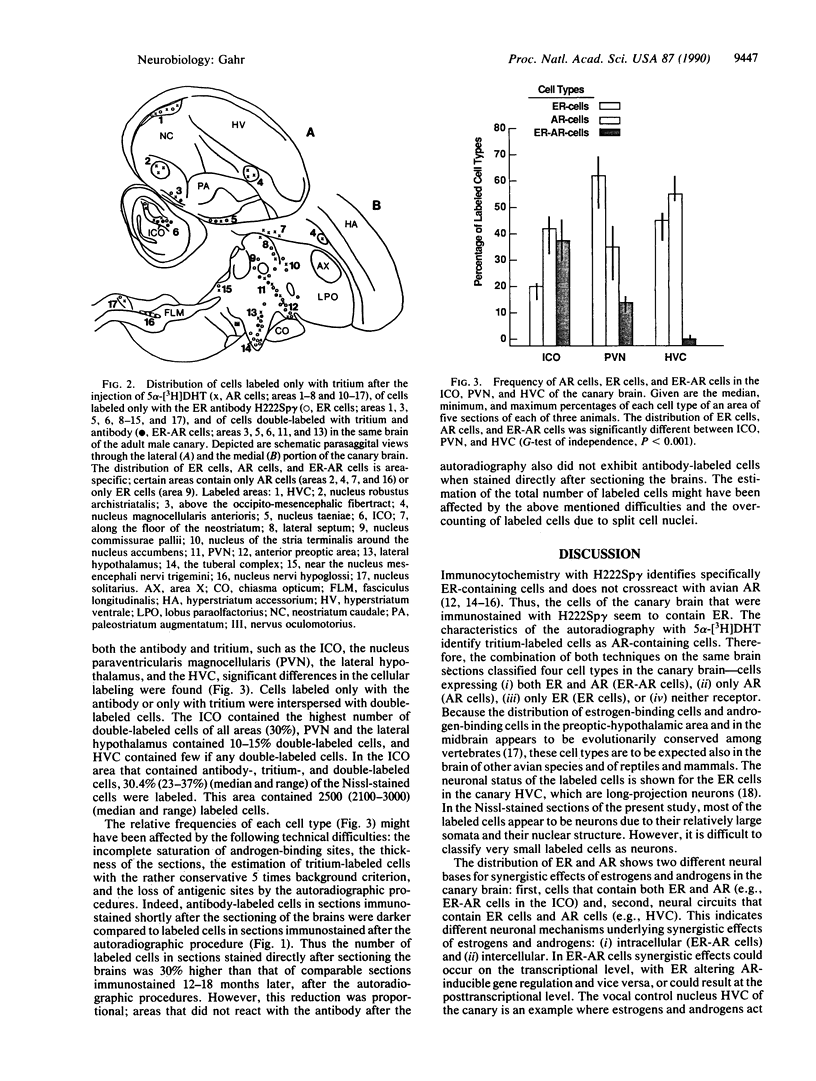
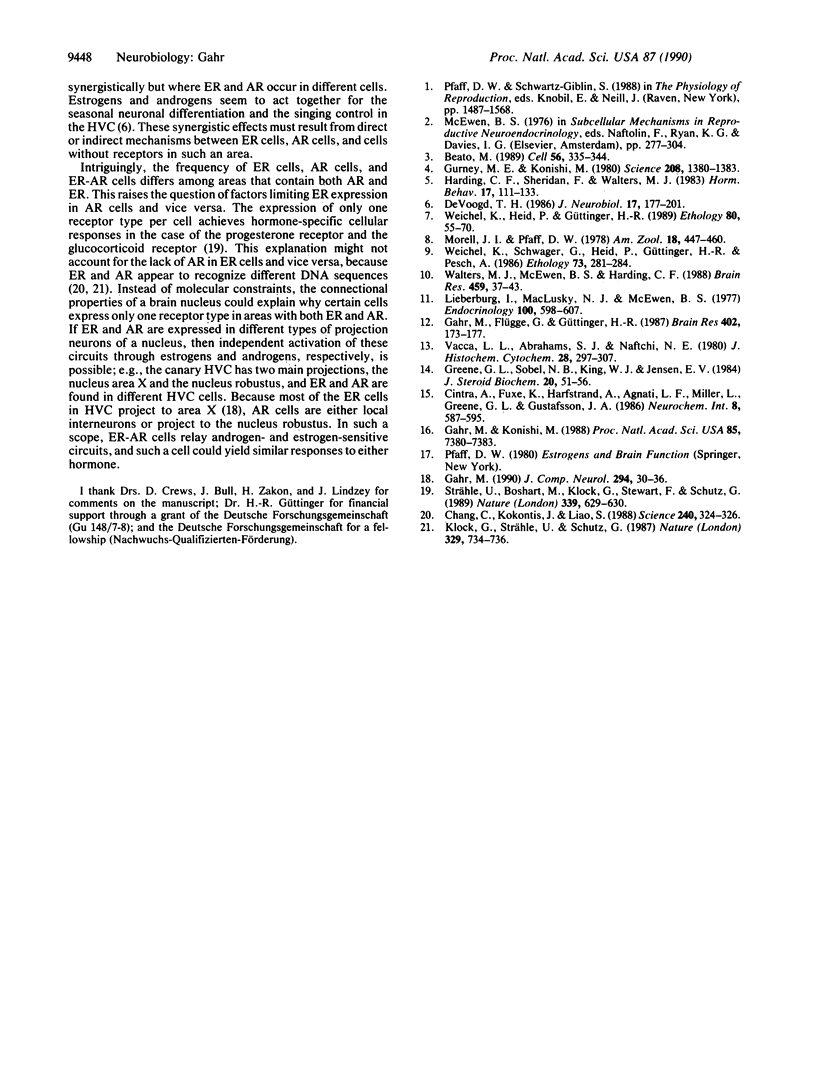
Images in this article
Selected References
These references are in PubMed. This may not be the complete list of references from this article.
- Beato M. Gene regulation by steroid hormones. Cell. 1989 Feb 10;56(3):335–344. doi: 10.1016/0092-8674(89)90237-7. [DOI] [PubMed] [Google Scholar]
- Chang C. S., Kokontis J., Liao S. T. Molecular cloning of human and rat complementary DNA encoding androgen receptors. Science. 1988 Apr 15;240(4850):324–326. doi: 10.1126/science.3353726. [DOI] [PubMed] [Google Scholar]
- DeVoogd T. J. Steroid interactions with structure and function of avian song control regions. J Neurobiol. 1986 May;17(3):177–201. doi: 10.1002/neu.480170305. [DOI] [PubMed] [Google Scholar]
- Gahr M. Delineation of a brain nucleus: comparisons of cytochemical, hodological, and cytoarchitectural views of the song control nucleus HVc of the adult canary. J Comp Neurol. 1990 Apr 1;294(1):30–36. doi: 10.1002/cne.902940104. [DOI] [PubMed] [Google Scholar]
- Gahr M., Flügge G., Güttinger H. R. Immunocytochemical localization of estrogen-binding neurons in the songbird brain. Brain Res. 1987 Jan 27;402(1):173–177. doi: 10.1016/0006-8993(87)91063-8. [DOI] [PubMed] [Google Scholar]
- Gahr M., Konishi M. Developmental changes in estrogen-sensitive neurons in the forebrain of the zebra finch. Proc Natl Acad Sci U S A. 1988 Oct;85(19):7380–7383. doi: 10.1073/pnas.85.19.7380. [DOI] [PMC free article] [PubMed] [Google Scholar]
- Greene G. L., Sobel N. B., King W. J., Jensen E. V. Immunochemical studies of estrogen receptors. J Steroid Biochem. 1984 Jan;20(1):51–56. doi: 10.1016/0022-4731(84)90188-2. [DOI] [PubMed] [Google Scholar]
- Gurney M. E., Konishi M. Hormone-induced sexual differentiation of brain and behavior in zebra finches. Science. 1980 Jun 20;208(4450):1380–1383. doi: 10.1126/science.208.4450.1380. [DOI] [PubMed] [Google Scholar]
- Harding C. F., Sheridan K., Walters M. J. Hormonal specificity and activation of sexual behavior in male zebra finches. Horm Behav. 1983 Mar;17(1):111–133. doi: 10.1016/0018-506x(83)90021-1. [DOI] [PubMed] [Google Scholar]
- Klock G., Strähle U., Schütz G. Oestrogen and glucocorticoid responsive elements are closely related but distinct. Nature. 1987 Oct 22;329(6141):734–736. doi: 10.1038/329734a0. [DOI] [PubMed] [Google Scholar]
- Lieberburg I., Maclusky N. J., McEwen B. S. 5alpha-Dihydrotestosterone (DHT) receptors in rat brain and pituitary cell nuclei. Endocrinology. 1977 Feb;100(2):598–607. doi: 10.1210/endo-100-2-598. [DOI] [PubMed] [Google Scholar]
- Strähle U., Boshart M., Klock G., Stewart F., Schütz G. Glucocorticoid- and progesterone-specific effects are determined by differential expression of the respective hormone receptors. Nature. 1989 Jun 22;339(6226):629–632. doi: 10.1038/339629a0. [DOI] [PubMed] [Google Scholar]
- Vacca L. L., Abrahams S. J., Naftchi N. E. A modified peroxidase--antiperoxidase procedure for improved localization of tissue antigens: localization of substance P in rat spinal cord. J Histochem Cytochem. 1980 Apr;28(4):297–307. doi: 10.1177/28.4.6154730. [DOI] [PubMed] [Google Scholar]
- Walters M. J., McEwen B. S., Harding C. F. Estrogen receptor levels in hypothalamic and vocal control nuclei in the male zebra finch. Brain Res. 1988 Aug 30;459(1):37–43. doi: 10.1016/0006-8993(88)90283-1. [DOI] [PubMed] [Google Scholar]







